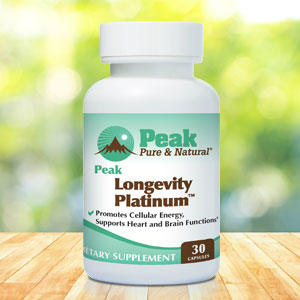Get Easy Health Digest™ in your inbox and don’t miss a thing when you subscribe today. Plus, get the free bonus report, Mother Nature’s Tips, Tricks and Remedies for Cholesterol, Blood Pressure & Blood Sugar as my way of saying welcome to the community!
How fasting and low-carb diets fight infection and aging

Why have intermittent fasting and low-carb diets like the keto diet become so popular in recent years? Because they change how your metabolism works in a way that helps you lose weight, increase energy reserves and improve your health.
You see, when you go on a fast or eat an extremely low-carb diet like the keto diet, you stop giving your body what it typically burns as fuel — glucose. Without glucose, your body has to figure out another fuel source, so it starts using fat molecules called ketones as fuel instead.
When your body enters a state where it uses fat as fuel instead of glucose, it’s known as ketosis. There are a lot of benefits to entering a state of ketosis. But most of them tie back to its ability to do one thing for your body — reduce inflammation. Here are a couple of ways the inflammation-fighting effect of ketosis benefits your body…
Ketosis may help you overcome a bacterial infection
In a 2016 study published in the journal Cell, researchers wanted to explore the impact fasting had on mice who were suffering from viral or bacterial infections. So, they force-fed a mouse who was suffering from a bacterial infection called listeriosis as well as a mouse with a viral infection. The outcome for each mouse was very different…
Feeding the mouse with a viral infection helped nurse it back to health. That’s because the mouse needed the glucose it received through food to adapt to the stress caused by the virus. But the mouse with the bacterial infection didn’t fare so well after being force-fed. It died.
Researchers believe the mouse died because the glucose from the food prevented ketogenesis, the process the body uses to make ketones. According to researchers, ketogenesis can counteract the oxidative stress caused by a bacterial infection. In other words? Cutting off the glucose supply during a bacterial infection is most likely beneficial. And the same seems to be true for parasitic infections as well.
One 2018 study found that cutting off the glucose supply to mice with malaria made them more resistant to the disease.
Ketosis can slow aging and prevent age-related diseases
As you’ve probably heard, inflammation is the driving factor behind the aging process and most age-related diseases.
When the body enters ketosis, it creates a special ketone metabolite called beta-hydroxybutyrate specifically to fuel the brain. Well, research shows beta-hydroxybutyrate can block a protein called the NLRP3 inflammasome that contributes to chronic inflammation and the chronic diseases that inflammation causes.
In fact, in one study, researchers gave beta-hydroxybutyrate to mice with inflammation caused by NLRP3. Guess what happened? Beta-hydroxybutyrate blocked NLRP3, and those mice didn’t develop the age-related diseases they would have otherwise.
What you need to know about keto and intermittent fasting
So, should you go keto and/or try fasting? Plenty of people do and have great results, but neither is a walk in the park.
The standard ketogenic diet consists of about 75 percent fat, 20 percent protein and 5 percent carbs. The typical healthy diet consists of about 45 to 65 percent carbs, 20 to 35 percent fat and 10 to 35 percent protein. That’s quite a difference.
Most of your calories on the keto diet come from healthy fats like grass-fed meat, free-range poultry, pasture-raised eggs, wild-caught fish, full-fat dairy, nuts, seeds and oils. You also eat low-carb veggies and small amounts of low-glycemic fruits like berries.
If you’re considering going keto and you’d like a more in-depth guide to the benefits and rules, check out The keto diet in a nutshell.
As far as intermittent fasting goes, there are a lot of different ways you can approach it. You can try alternate-day fasting, which involves eating anything you want one day and nothing at all the next.
You could also try a modified alternate-day fast schedule if cutting out all food for a day sounds too extreme. That involves eating 500 calories on fast days.
There’s also a more moderate form of intermittent fasting where you limit your daily eating window to eight hours and fast for 16 hours, although this type of fast won’t send your body into ketosis.
The keto diet and alternate-day fasting are safe for most people but check with your doctor before you start either, just to be cautious.
Editor’s note: Did you know that when you take your body from acid to alkaline you can boost your energy, lose weight, soothe digestion, avoid illness and achieve wellness? Click here to discover The Alkaline Secret to Ultimate Vitality and revive your life today!
Sources:
- Ketostasis: nature’s sweet spot — Technology.org
- 10 Health Benefits of Low-Carb and Ketogenic Diets — Healthline
- Alternate-Day Fasting: A Comprehensive Beginner’s Guide — Healthline.














